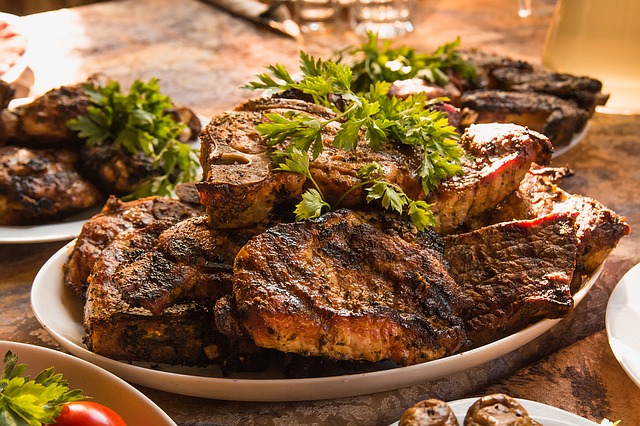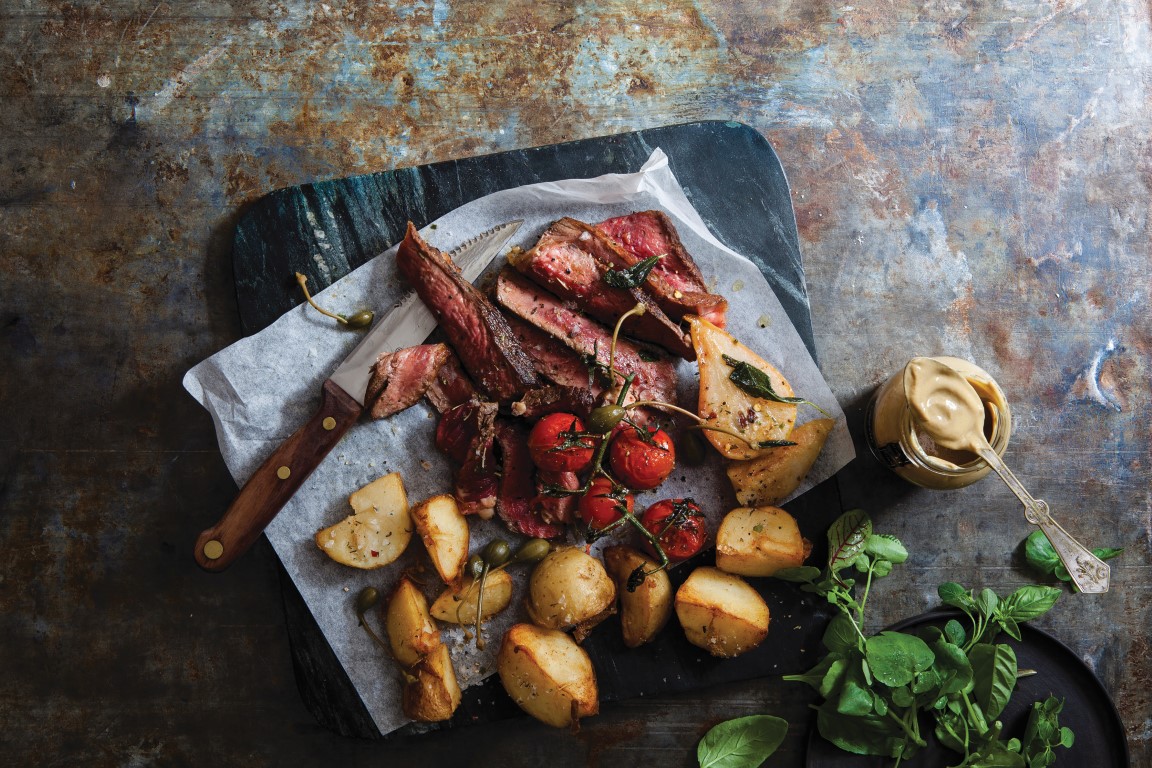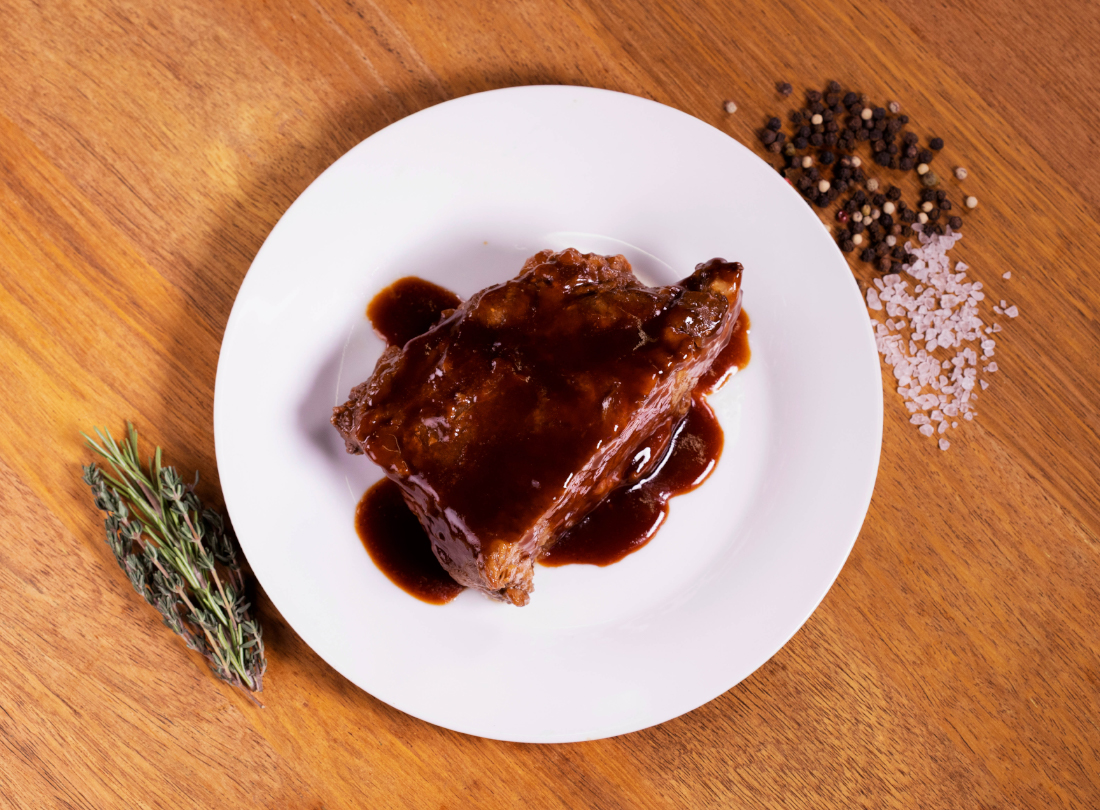

There are a number of popular methods for cooking beef. You should pick your methods based on the tenderness of the cut you’re using, the amount of time you have to prepare and cook, and the desired result you’d like to achieve. These cooking methods can be sorted into ‘dry heat methods’ and ‘moist heat methods’.
This week, we’re exploring dry heat cooking methods (stay tuned for moist heat methods next week).
Popular Dry Heat Cooking Methods
Dry heat cooking is suitable for tender cuts of meat. With dry heat cooking, heat is transferred to food through air, fat, metal or radiation. Dry heat methods usually involve higher temperatures than moist methods, because air, fat and metal can be heated to temperatures that exceed the boiling point of water.
Roasting
Roasting (which is similar to baking, but the term is usually reserved for meat and poultry) is recommended for larger cuts of beef. When roasting, baste the meat with fat or meat juices to prevent it from drying out during the cooking process.
Ideal for beef cuts including rib, sirloin, top rump and fillet.
Grilling
Grilling involves exposing beef to very intense heat for a short amount of time. The source of heat can be direct flames (from a gas or charcoal BBQ) or radiant heat.
Ideal for beef cuts including strip steak, t-bone, top sirloin, rib-eye and tenderloin.
Broiling
Broiling, which is similar to grilling, consists of placing food very close to an intense heat source for a short period of time. Broiling takes place in an oven (with an appropriate broiling setting) – most ovens have one broiling temperature setting, so temperature needs to be controlled by moving the meat closer or further from the heat source.
Ideal for beef cuts including tenderloin, sirloin tip, flat iron steak, t-bone steak and ground beef.
Frying
Frying uses fat to transfer heat to food. Although fat (like oil or butter) is a liquid at frying temperatures, it is still considered a dry heat method because it doesn’t involve water. Frying is often used to sear meat (AKA achieve a brown and crispy exterior through a process called the Maillard Reaction).
Ideal for beef cuts including sirloin, tenderloin, t-bone, rib-eye and oyster blade.
And there you have it! Next week we will explore popular moist heat methods for cooking beef. Like braising, stewing and more.
 Return to News
Return to News

















